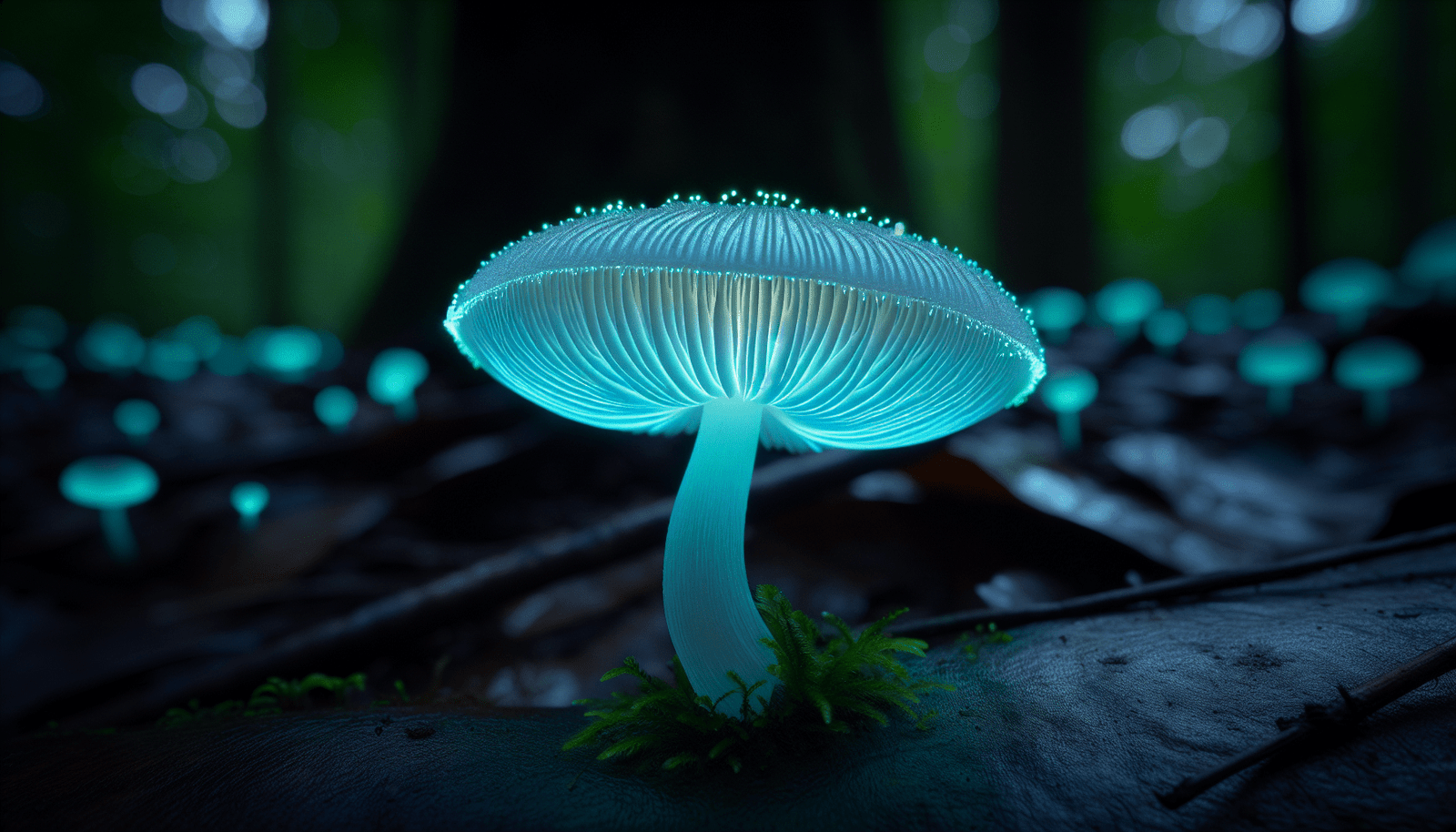Have you ever wondered what the most interesting mushroom might be? Mushrooms have fascinated humans for millennia, offering a myriad of shapes, colors, and characteristics that captivate scientists, chefs, and nature enthusiasts alike. They’re not just food; mushrooms hold a world of mysteries and marvels in their spongy bodies. So, what makes a mushroom interesting? Is it their taste, their medicinal properties, or perhaps their mind-altering effects?
Defining “Interesting” in the World of Mushrooms
Before diving into specific species, let’s clarify what we mean by “interesting.” Interest can come in many forms—biological uniqueness, culinary value, medicinal properties, or even their role in folklore and culture. Each of these aspects will guide us through the fascinating world of mushrooms.
Biological Uniqueness
Mushrooms belong to the kingdom Fungi, a category distinct from plants and animals. Their reproductive methods, symbiotic relationships, and growth forms all contribute to their biological intrigue. Some mushrooms glow in the dark, while others release spores in intricate and delicate patterns.
Culinary Value
The gastronomic allure of mushrooms can’t be overstated. From the rich, umami flavor of shiitakes to the exquisite taste of truffles, mushrooms have a special place in kitchens worldwide. The complexity of flavors and textures make them a gourmet’s delight.
Medicinal Properties
For centuries, mushrooms have been used in traditional medicine. Modern science continues to uncover their potential health benefits, from boosting the immune system to fighting cancer. Some mushrooms also have psychoactive properties that have been used in spiritual practices.
Cultural and Folkloric Significance
Mushrooms have made their way into folklore, myths, and legends across cultures. In some traditions, they are seen as symbols of immortality or believed to possess magical qualities. Fairy rings and other mushroom-related phenomena have added layers of mystery and enchantment to these fungi.

The Contenders: Top Interesting Mushrooms
Now that we have a framework, let’s explore some of the most fascinating mushrooms out there. We’ll cover a variety of species, each remarkable in its own right for differing reasons.
1. Amanita muscaria (Fly Agaric)
Biological Uniqueness
The Amanita muscaria, also known as Fly Agaric, is easily one of the most recognizable mushrooms, thanks to its red cap with white spots. It has been used in various traditional practices and is known for its psychoactive properties. The mushroom forms a mycorrhizal relationship with trees, aiding in nutrient exchange.
Cultural Significance
Fly Agaric has a storied presence in folklore and mythology, often depicted in fairy tales and believed to be the origin of the “magic mushroom” concept. It is also said to have been used by Siberian shamans in spiritual rituals.
| Feature | Description |
|---|---|
| Appearance | Red cap with white spots |
| Habitat | Temperate and boreal forests |
| Psychoactive | Contains muscimol and ibotenic acid |
| Cultural Role | Featured in European and Asian folklore |
2. Morchella spp. (Morels)
Culinary Value
Morels are highly prized by chefs and foragers alike due to their unique, honeycomb-like appearance and rich, earthy flavor. They are often sautéed in butter or cream sauces, adding a luxurious depth to dishes.
Identification and Habitat
Morels typically grow in wooded areas, especially around decaying elm, ash, and apple trees. However, they are notoriously hard to cultivate commercially, making them even more sought after.
| Feature | Description |
|---|---|
| Appearance | Spongy, honeycomb-like cap |
| Habitat | Forests, particularly around decayed trees |
| Culinary Use | Gourmet ingredient |
| Challenges | Difficult to cultivate commercially |
3. Ganoderma lucidum (Reishi)
Medicinal Properties
Reishi, also known as Lingzhi, is celebrated in traditional Chinese medicine and has been used for over 2,000 years. Modern studies suggest it may have immune-boosting, anti-cancer, and anti-inflammatory properties. The mushroom is often dried and used to make teas, tinctures, and supplements.
Cultivation
Reishi can be cultivated on various woody substrates and is relatively easy to grow compared to other medicinal mushrooms. This accessibility makes it a popular choice for holistic health practitioners and enthusiasts.
| Feature | Description |
|---|---|
| Appearance | Dark, glossy surface |
| Habitat | Deciduous forests and cultivated on wood |
| Medicinal Use | Immune-boosting, anti-cancer, anti-inflammatory |
| Ease of Cultivation | Relatively easy |
4. Pleurotus ostreatus (Oyster Mushroom)
Ecological Role
Oyster mushrooms are fascinating not just for their culinary value but also for their role in the ecosystem. They can decompose organic matter and even break down toxins, making them valuable for bioremediation efforts.
Culinary Use
Oyster mushrooms have a mild, delicate flavor and a slightly chewy texture, making them a versatile ingredient in various dishes. They can be sautéed, grilled, or used in soups and stews.
| Feature | Description |
|---|---|
| Appearance | Fan-shaped, can be white, gray, or tan |
| Habitat | Decaying wood, particularly hardwood |
| Ecological Role | Decomposer, bioremediation |
| Culinary Use | Versatile, mild flavor |
5. Psilocybe cubensis (Magic Mushroom)
Psychoactive Effects
Psilocybe cubensis is perhaps the most well-known psychedelic mushroom, containing the compounds psilocybin and psilocin. These substances can induce altered states of consciousness, including visual and auditory hallucinations, and have been used in various spiritual and therapeutic settings.
Research and Applications
Recently, there has been a resurgence of interest in the therapeutic potential of psilocybin for mental health issues like depression, PTSD, and anxiety. Clinical trials are ongoing, and early results are promising.
| Feature | Description |
|---|---|
| Appearance | Small, brownish, with a conical cap |
| Habitat | Manure-rich soils, particularly in tropical regions |
| Psychoactive | Contains psilocybin and psilocin |
| Research | Used in studies for mental health treatments |

The Decision: What Makes a Mushroom the Most Interesting?
As we’ve seen, “interesting” can mean many different things when it comes to mushrooms. Therefore, determining which mushroom is the most interesting can be quite subjective, depending on individual interests and inclinations.
Biological Intricacies
If biological uniqueness piques your interest, the Amanita muscaria and Pleurotus ostreatus offer captivating examples of nature’s complexity. The former’s dazzling appearance and psychoactive properties make it a subject of both scientific and cultural curiosity. The latter’s role in bioremediation showcases mushrooms’ significant impact on ecosystem health.
Culinary Excellence
For those passionate about gastronomy, Morchella spp. and Pleurotus ostreatus can be exceedingly interesting, given their exquisite flavors and textures. Their culinary applications have made them stars in kitchens around the world, whether in haute cuisine or rustic home cooking.
Medicinal Marvels
If you are fascinated by medicinal potential, Ganoderma lucidum could be your top choice. Its historical significance and emerging modern medical applications provide a compelling case for its extraordinary qualities.
Psychedelic Phenomena
For the more spiritually inclined or those interested in mental health innovations, Psilocybe cubensis presents a world of possibilities. Its psychoactive effects and the ongoing research into its therapeutic uses add layers of complexity and potential that are hard to ignore.

Conclusion: The Diversity of Interest
Every mushroom discussed has exceptional qualities that can be deemed “interesting” based on different criteria. The fascinating world of mushrooms is a testament to nature’s diversity, offering a plethora of options that resonate differently depending on what qualities you value most.
Ultimately, the most interesting mushroom for you is the one that sparks your curiosity and aligns with your interests—whether that’s their biological peculiarities, their contribution to our plates, their medicinal potential, or their role in the history of human consciousness.
By delving into the world of mushrooms, you embark on a journey through nature’s subterranean wonders, a journey that will forever change the way you see these remarkable organisms. So, which mushroom do you find the most interesting?

